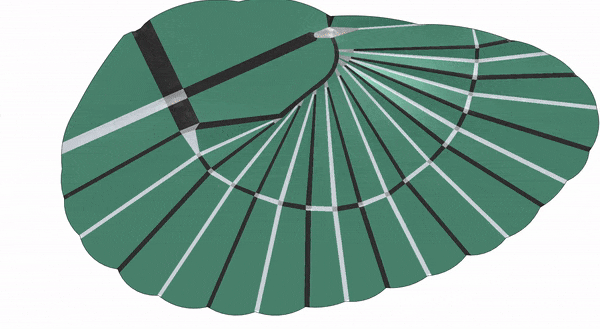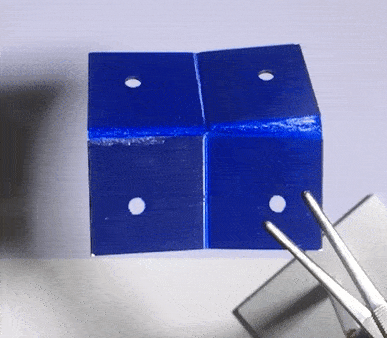Origami folds of insect wing can help improve machine functions
The earwig insect has more folds in its wings than any other organism in the animal kingdom but uses minimal energy to move. Through simulations and creating a 4-D replica of these folds, researchers from ETH Zürich in Switzerland and Purdue University have likened the wing to self-folding origami that could inform how to make machines be more adaptable and responsive with less energy used.
“The theory of origami assumes that you have 2-D, unstretchable materials,” said Andres Arrieta, Purdue assistant professor of mechanical engineering, whose Programmable Structures Lab contributed to the study. “But imagine that you have a piece of paper and you try to stretch it, and you store some energy there. That stretching creates bistabilities.”
Like conventional origami, the folds of an earwig’s wing enable it to change shape. The earwig’s origami design, however is far more complex; trying to stretch at folds would break paper, whereas stretching is central to the earwig’s ability to self-fold and lock into specific geometries.
“It’s like having an arm-wrestling contest. Each arm is pushing in a different direction, and then you reach some sort of equilibrium,” Arrieta said. “For an earwig’s wing, the crease has been stretched, but it is also constrained to lie in a particular geometry.”
This simultaneous stretching and tension at a crease line led the researchers to coin this behavior as “spring” origami as opposed to how paper-like materials fold. This spring either extends or rotates at a crease by design as determined by the distribution of the protein resilin. The resulting bistability, or the ability to attain two stable shapes, means that the wing can unfold to fly or fold to crawl into the earwig’s underground habitat.

“Bistability not only allows this pattern to have two stable configurations — one fully folded and one fully deployed — but it also allows each of these stable states to sustain loads,” Arrieta said, meaning that no extra energy is required for each state to lock and hold the earwig’s weight during flight, or to maintain the wing tuck when walking.
The ability of an earwig’s wing to quickly fold into shapes automatically and lock into these conformations without the need of an actuator, or “hand” as with paper origami, could be preprogrammed into the designs of robots, packaging, spacecraft and biomedical devices.
“This means that we could get a robot gripper to lift something and hold it without any extra energy, or enable the robot to conform to the shape of whatever it’s interacting with while still being able to hold that object,” Arrieta said.
The researchers also envision self-folding tents that don’t require assembly and space satellite sails that hold specific shapes. Arrieta’s lab is working on the designs of stents that could extend, conform and lock into the shapes of arteries more compatibly.
“Bistable origami can be made out of any material as long as you pre-stress it,” Arrieta said.
This study was a collaborative effort between Arrieta’s lab at Purdue and lead author Jakob Faber and Andr Studart, researchers of complex materials within the department of materials at ETH Zrich. Faber spent three months at Purdue during the development of this work.

Source: Origami folds of insect wing can help improve machine functions
